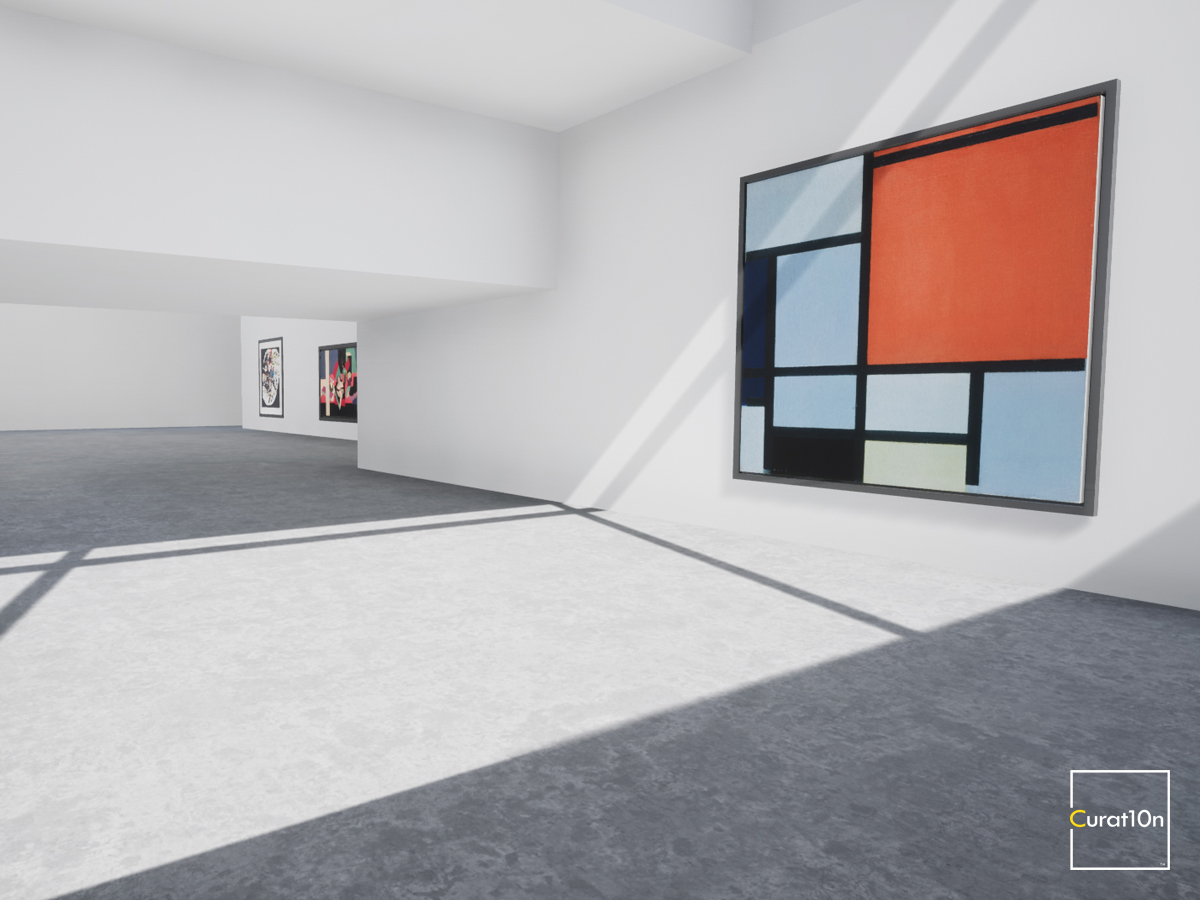Prices & Options
You can see all of the virtual gallery prices and options on this page. If you have any questions, if you would like a custom quotation, or if you want to talk to us about your virtual exhibition project…send us an email or contact us using the enquiry form here.
This page is divided into four sections:
1. VIRTUAL GALLERIES: Choose a ready-made space, a bespoke gallery design, or multiple galleries.
2. EXHIBITION CONTENT: Pay-as-you-go content and editing, such as video, audio and 3D models.
3. GALLERY MANAGEMENT: Long-term subscriptions and options for updating your gallery.
4. PUBLISHING & SHARING: Online streaming, downloadable apps, VR and live events.
Winter Sale – 15% Off
If you would like to create your own gallery or curate an exhibition, there is currently 15% off. This offer applies to new projects and subscriptions confirmed before the end of February, even if development doesn’t start until later in the year.
Contact us for a quotation or to find out more.
Virtual Gallery Prices
Ready-made galleries are divided into three categories based on their size and level of detail:
★ bronze, ★★ silver and ★★★ gold.
Bespoke gallery spaces can be modelled on real locations or can be new designs based on your own creative vision. Contact us for a quotationif you would like to create a custom-made galleries.
Additional copies of a gallery can be used to show multiple exhibitions, at the same time, in the same space, and at a lower cost. This means that you can add a new gallery space every time you make a new exhibition, and still keep all your previous shows online at the same time.
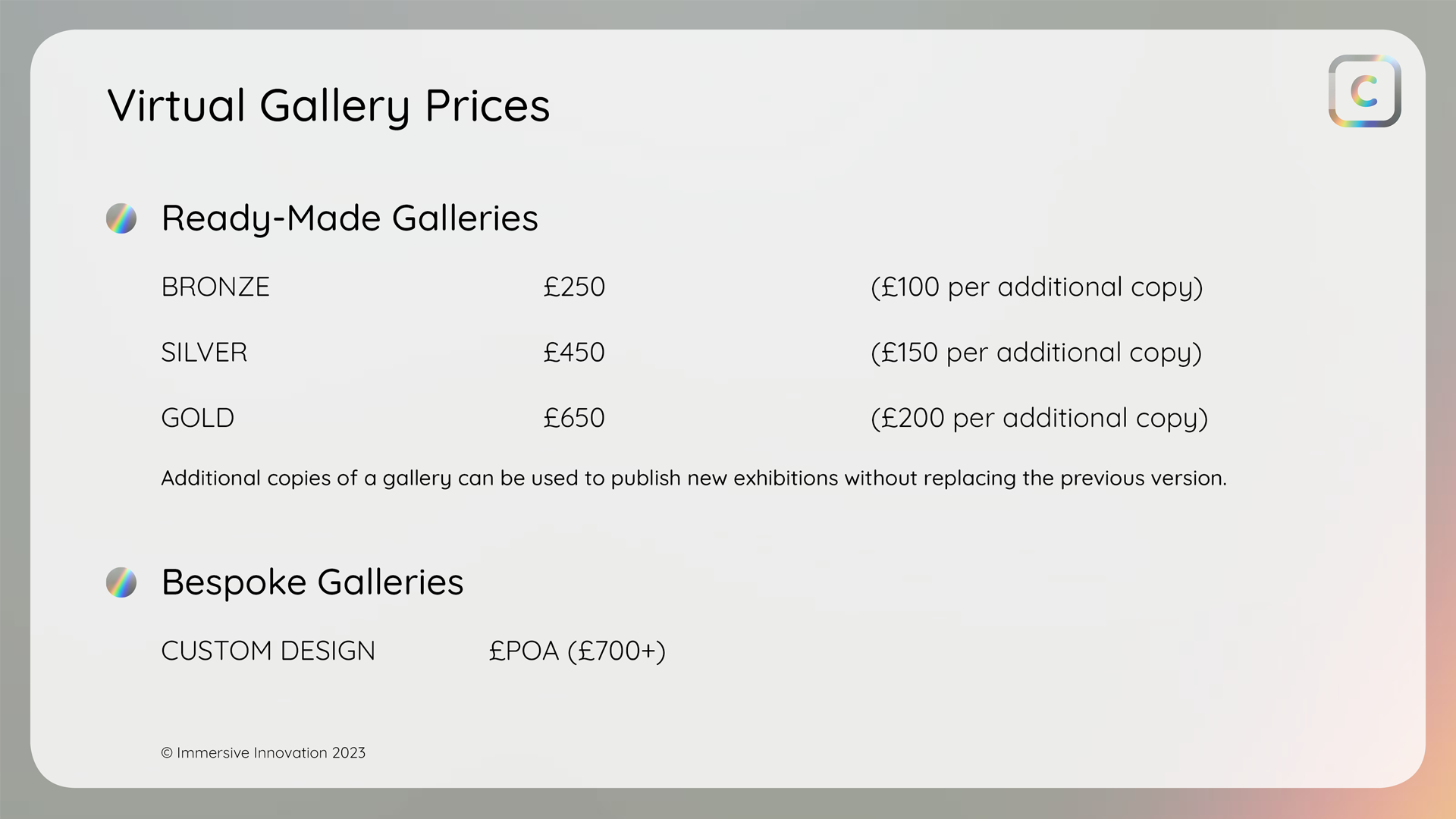
Exhibition Content Prices and Options
Some projects will require additional exhibition content. This is necessary if you are designing an exhibition on a pay-as-you-go basis.
If you sign up to a subscription package (see below) your subscription may include all of the exhibition content you require.
If you want to add sculptural objects or 3D exhibits to a virtual gallery, we can scan these and create 3D digital models. This is a custom service and the price will depend on the size and complexity of the 3D object. A simpler and lower-cost alternative is to use multiple photographs to give the illusion of 3D (we call this 2.5D).
We can also provide low-cost image editing, as well as graphic design for exhibiton content (e.g. wall texts/titles/decals). We will send you all edited and newly made files so that you can also use them for other purposes (e.g. images, 3D models).
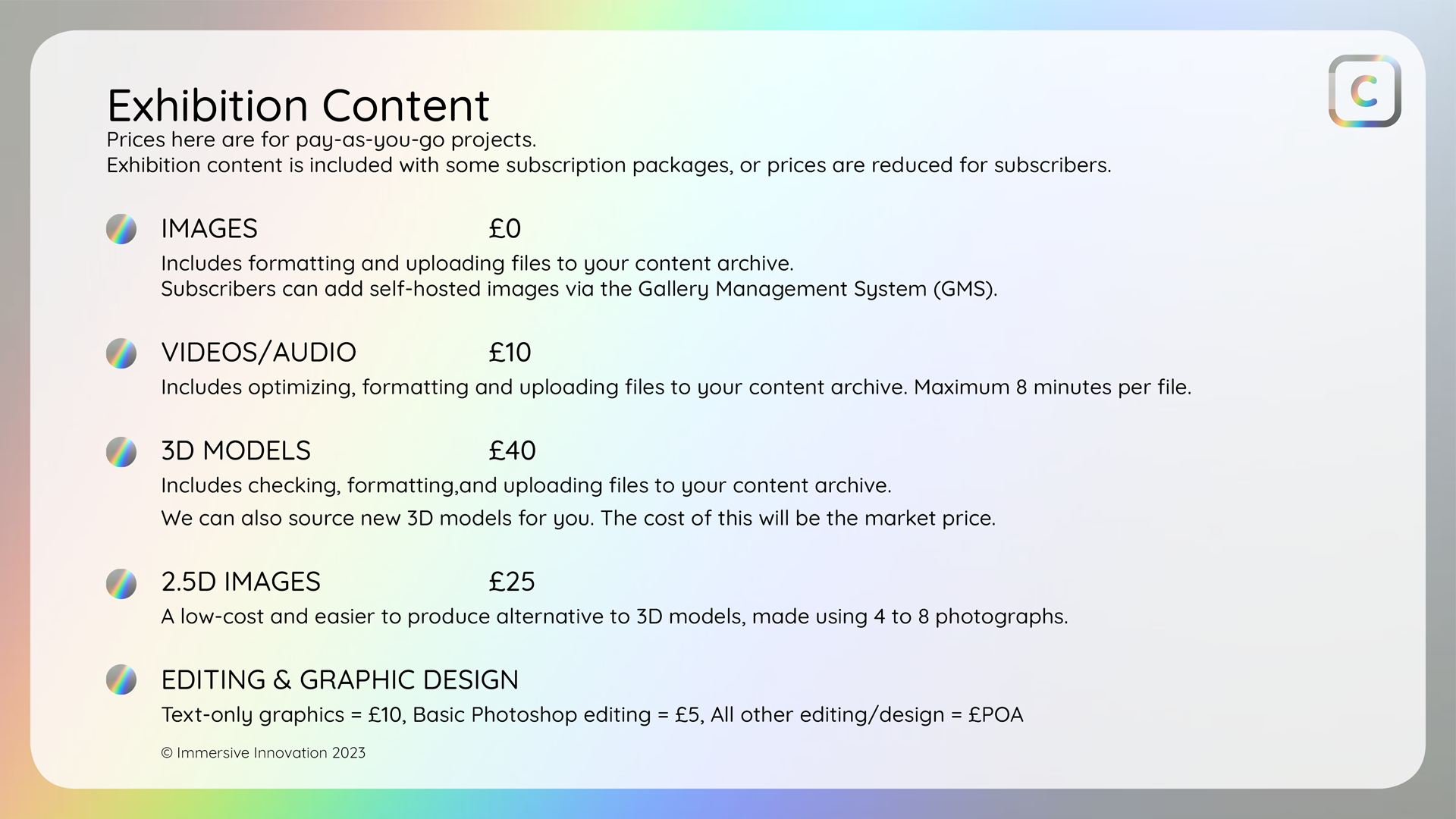
Gallery Management Prices
Gallery management is required if you want to update your virtual gallery and edit your exhibitions without our assistance.
If you are only making a single exhibition, a subscription is not needed.
If you want to design exhibitions on a pay-as-you-go basis, a subscription is not needed.
There are three types of subscription:
1. The BASIC subscription is suitable for galleries that only display images.
You will be able to add images and edit your exhibition whenever you wish.
2. The PRO subscription allows you to also include video, audio and 3D models.
You can also fully-customize the position of exhibits in your gallery.
3. The PREMIUM subscription has greater capacity for new content. It also allows you add a new copy of your gallery each month (i.e. After one year, you can display up to 12 exhibitions at the same time).
All exhibitions can be designed on a pay-as-you-go-basis. Subscription packages may provide a more cost-effective option if you intend to make regular updates over a longer period of time. You always have the option of adding bespoke features on request and these will be quoted separately. We can oprovide full consultation and assistance at any time.
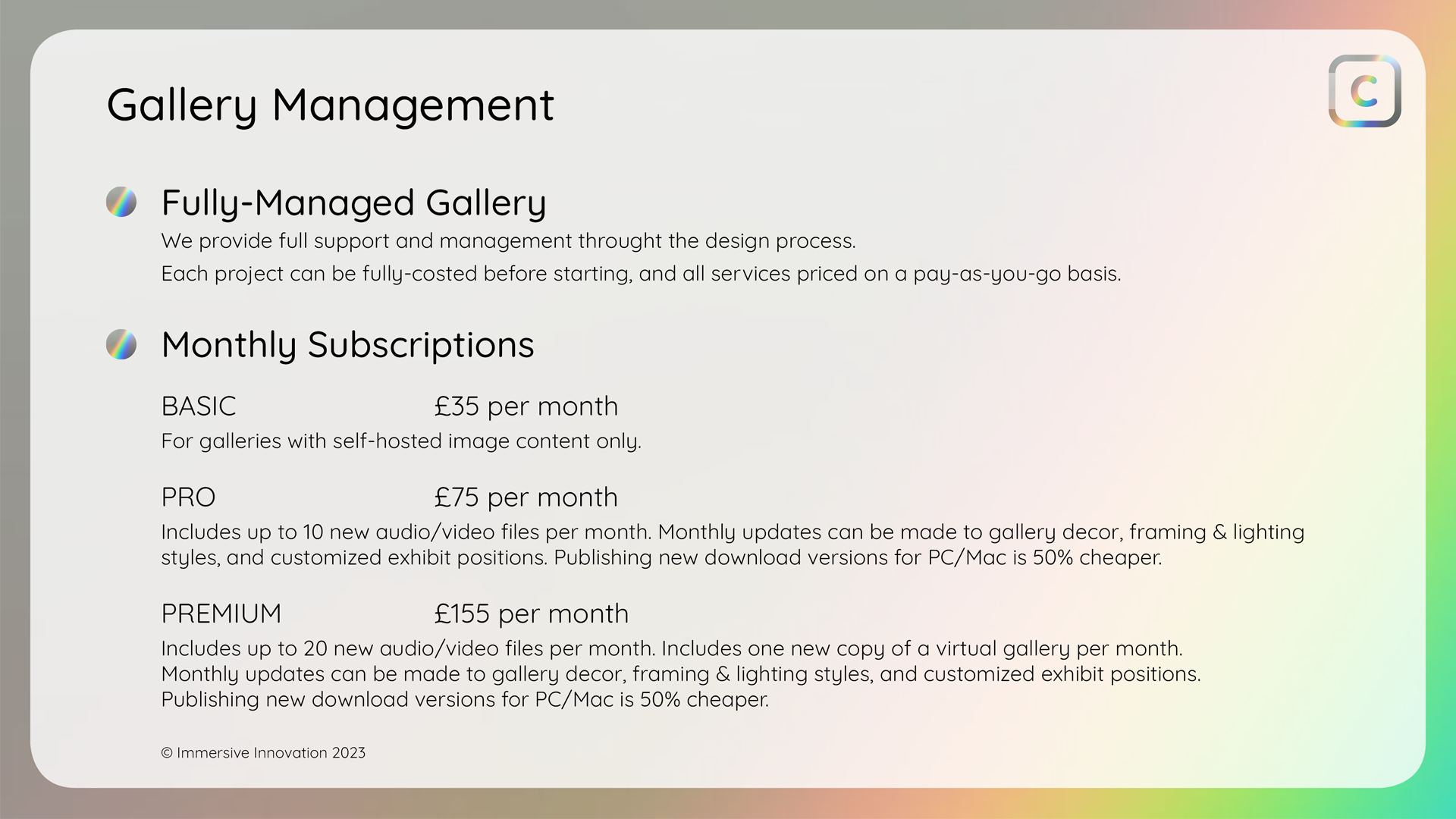
Publishing & Sharing Prices
Almost all projects will require one of the services from this section.
This will depend on how you want your audience to find and explore your virtual gallery.
There are three options and all can be used in combination:
1. ONLINE STREAMING: Your gallery can be embedded on almost any web page (or multiple pages).
2. DOWNLOADABLE APPS: It can be downloaded for PC and Mac as a stand-alone application.
3. VR & LIVE EVENTS: We can help with live event setup and provide immersive VR experiences.
With online streaming we can also provide analaytics and statistics about your audience and their level of engagement with exhibits in your gallery.
If you have a downloadable app, you can distribute this with an online link, QR code, or on physical media. For example, links can be sent out by email, or included with an online subscription, QR codes can be printed onto promotional materials, or it can saved onto a USB and distributed physically.
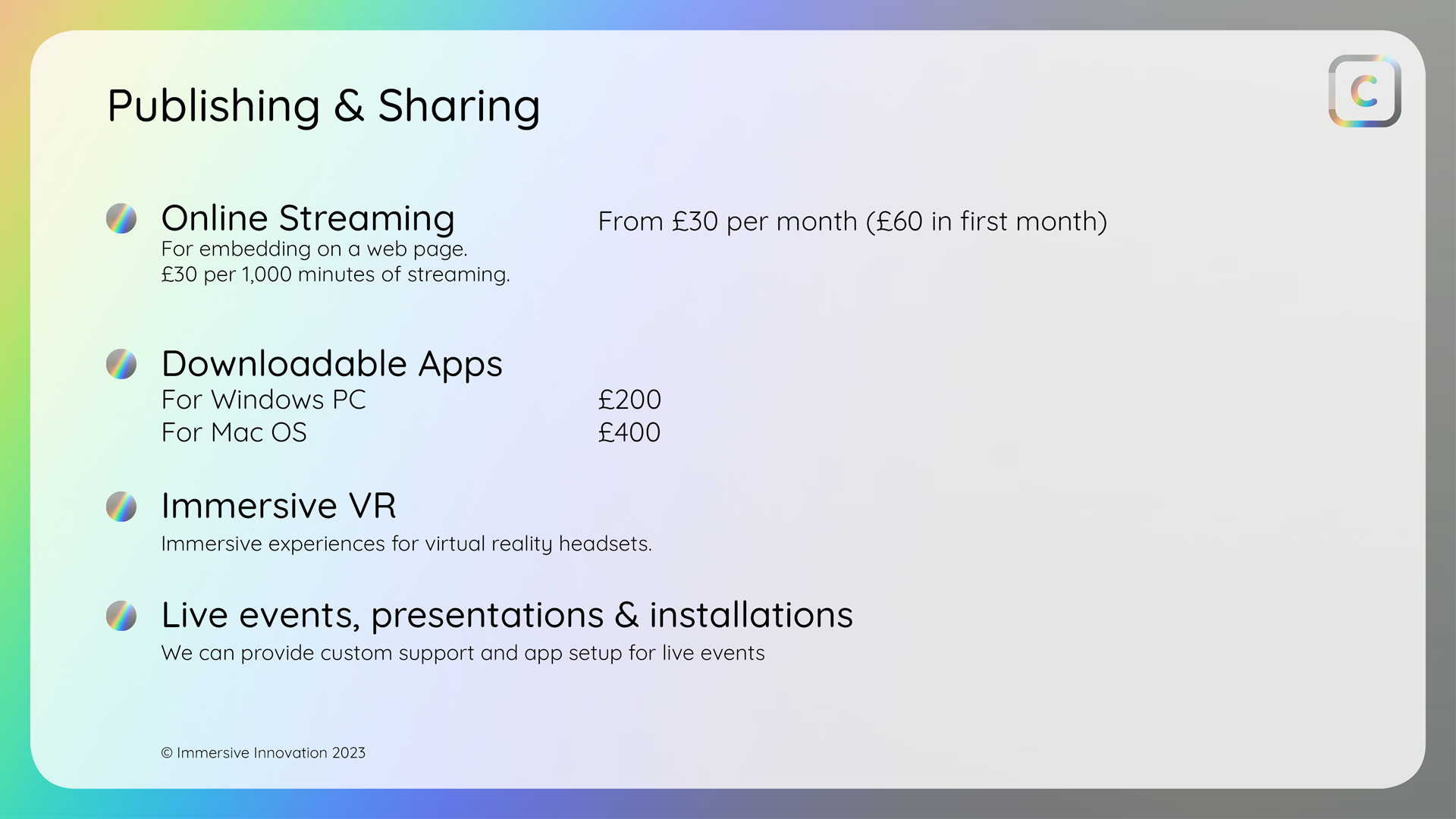
Enquiries About Prices and Options
The easiest way to learn about your options is to talk to us. You can arrange a video call and we will take you a guided tour of our software and virtual galleries. We can also answer any questions you may have, either by email of during a consultation call.
If you would like to create a new custom-made virtual gallery space, you can describe what you want and perhaps share some images of the type of gallery you have in mind. We will then give you a quotation.
You can also tell us about your exhibition project and we will explain the different services and features that are available. Even if you only have a vague idea of what you want, we can help to come up with a creative vision for your virtual exhibition.


